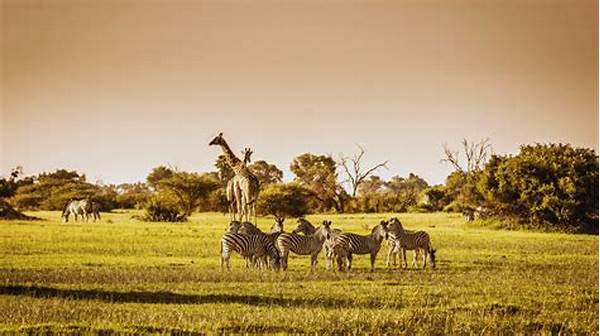In the heart of every nature enthusiast resides the desire to connect with wildlife, to experience the raw beauty of creatures in their natural habitats. It’s a relentless pursuit—the call of the wild that beckons us. But how do we satisfy this yearning without harming the very nature we love? The magic lies in ethical wildlife encounters in natural areas. Imagine standing quietly amidst lush greenery, observing a family of elephants splash joyfully in a watering hole, or spotting an eagle soaring majestically against a backdrop of azure skies. These moments are soul-stirring, leaving imprints on our hearts and minds while causing no harm to our wild counterparts. Let’s dive deeper into ensuring that our wildlife encounters are responsible and respectful.
Read More : Mount Everest Base Camp Trekking In Nepal
Ethical wildlife encounters in natural areas begin with understanding that these creatures are sentient beings, not objects for our amusement. Engaging in such encounters requires us not just to witness wildlife but to become advocates for their well-being. This involves choosing responsible tour operators who prioritize animal welfare, adhering to guidelines that minimize human impact, and choosing observation over interaction. For instance, maintaining a safe distance ensures that you’re witnessing natural behavior rather than a stressed reaction to human presence. It’s about nurturing respect and maintaining the dignity of these magnificent creatures.
Crafting Responsible Wild Experiences
Ethical wildlife encounters in natural areas also mean contributing to preservation efforts. By supporting eco-tourism initiatives and conservation programs, travelers can aid in the protection of these natural habitats. Testimonials from travelers often highlight a more profound, emotionally rewarding experience when conscious choices are made. Knowing that our presence is part of a solution rather than a problem elevates the encounter from ordinary to extraordinary. It’s more than a photo opportunity; it’s a chance to weave our story into the larger tapestry of conservation—a narrative that speaks of harmony with nature and respect for all living beings.
—
Tourism has long been a double-edged sword. On one hand, it brings awareness and revenue that can bolster conservation efforts. On the other, it poses a threat to the delicate balance of ecosystems. Ethical wildlife encounters in natural areas strike a balance between enjoying these experiences and preserving them for future generations. At the core of these encounters is education. Learning about the behaviors, habitats, and plights of various species instills a deep respect for them. Moreover, this knowledge becomes a powerful tool to inspire others to embrace responsible stewardship of our planet.
The Role of Eco-Tourism
Eco-tourism is pivotal in promoting ethical wildlife encounters in natural areas. It is a thriving industry that not only uplifts local economies but also ensures that tourism activities contribute positively to preserving natural habitats. Statistics support this notion; studies have shown that areas with strong eco-tourism frameworks report higher biodiversity levels and improved species protection. By prioritizing sustainability and community involvement, eco-tourism becomes a model of how we can explore and celebrate the natural world responsibly.
Engaging with Local Communities
Local communities play an integral role in ethical wildlife encounters in natural areas. They are the stewards of their lands, possessing invaluable knowledge about the ecosystems that tourists come to admire. Engaging with these communities allows for a more authentic experience and deeper understanding of the intricate balance between humans and nature. Collaborative efforts with local guides and conservationists provide insight into both the challenges and successes of wildlife management, rooting visitors in a shared goal of protecting these precious environments.
Tourism, when done right, can be a catalyst for positive change. By adhering to ethical practices, tourists can ensure that their wildlife encounters contribute to conservation rather than compromise it. As more people travel mindfully, the hope is that these encounters inspire a global movement towards more sustainable interactions with our natural world.
—
Focused tours that implement strict guidelines to minimize disturbance.
Programs designed to educate visitors and protect sensitive ecosystems.
Limited permits and guided tours to minimize impact on gorilla families.
Restricted access to nesting sites to ensure successful hatchling release.
Binocular-based rather than interactive, maintaining a respectful distance.
The Importance of Guidelines
Ethical wildlife encounters are predicated on well-defined guidelines to protect both wildlife and visitors. For instance, anyone partaking in such tours must be briefed on appropriate behaviors, such as noise control and distance maintenance. It transforms the experience into not just an observation but an active learning journey. Are you prepared to respect and care for the wilderness you’re about to encounter?
Practical Tips for Tourists
1. Educate Yourself:
Learn about the species you’ll be encountering and their habitats.
2. Choose Certified Operators:
Opt for tours that follow conservation guidelines and prioritize sustainability.
3. Respect Boundaries:
Maintain appropriate distances and avoid feeding or touching wildlife.
4. Travel Light:
Pack sustainably, ensuring you leave no trace behind.
Read More : Tour To El Nido Beach In Palawan, Philippines
5. Support Local Initiatives:
Engage with and contribute to local conservation projects.
Ethical wildlife encounters in natural areas are not just a trend; they are a necessary step toward sustainable coexistence. By arming yourself with knowledge and demonstrating respect for nature, your encounters will be transformative, fostering a lifelong commitment to the planet’s welfare.
—
With growing awareness about the importance of sustainable practices, the future of ethical wildlife encounters in natural areas looks promising. New models of tourism that prioritize ethical practices over exploitation are emerging, setting a precedent for the industry. For instance, operator certifications now extend beyond safety measures to include environmental impact assessments. This shift not only creates a more educated traveler base but also ensures that conservation efforts are integrated deeply into tourism activities.
Despite these strides, the challenge remains to combat irresponsible tourism that still exists today. Ongoing education and advocacy are crucial in fostering a widespread understanding of what ethical wildlife encounters entail. By drawing from research and case studies, tours can continuously adapt and improve their practices, ensuring that their impact is always positive.
Science and Technology as Allies
Innovation plays a significant role in revolutionizing how we engage with wildlife ethically. From drone technology that allows for non-invasive observations to apps that help track wildlife behavior, science is an invaluable ally. These technological advancements provide unprecedented insight into wildlife ecology, enabling more respectful interactions.
Inviting You to the Movement
Are you ready to embark on an ethical wildlife adventure? Join the movement that’s shaping the future of wildlife tourism. Choose your next destination wisely, and let your travel decisions echo with compassion and respect. As you explore the wild wonders of the world, remember, that every choice you make in these natural areas is a vote for the kind of planet we wish to inhabit—full of thriving wildlife, shared stories, and heartfelt encounters.
Ethical wildlife encounters in natural areas not only enrich our understanding and appreciation of the natural world but also play an integral part in safeguarding it for future generations. Let’s walk hand in hand with nature, fostering a legacy of respect and protection.
—
Tours that prioritize observation without interference.
Guided experiences that educate visitors about ecology.
A portion of proceeds supports wildlife conservation efforts.
Engage local communities in planning and execution.
Manage visitations to sensitive environments.
Employ guides knowledgeable about sustainable practices.
A critical step in fostering ethical wildlife encounters is comprehensive visitor education. The more informed you are about the species and habitats you will explore, the more meaningful and respectful your interactions will be. Do you know the signs of wildlife distress, or how to minimize your ecological footprint during your visit? Engaging with wildlife ethically requires us to move beyond passive observation to active participation in their conservation.
With every trip, consider it your mission to support habitats and local conservation initiatives, ensuring that your presence leaves a positive mark. From choosing locally operated eco-lodges to participating in conservation projects, each small decision adds up to a massive impact.
Remember, the true joy of meeting wildlife in their home is not in ticking them off a checklist but in understanding and participating in the protection of their world. With your conscious effort, ethical wildlife encounters in natural areas can become a powerful narrative of change—changing perceptions, shaping futures, and preserving the natural heritage we all belong to.
Whether you’re a seasoned traveler or a budding enthusiast, ethical wildlife encounters invite you to step into a world where your actions elevate the environment you adore. Embrace the journey of learning to tread lightly and lovingly in the woodlands, deserts, and oceans shared between us and our magnificent fellow Earth dwellers.


